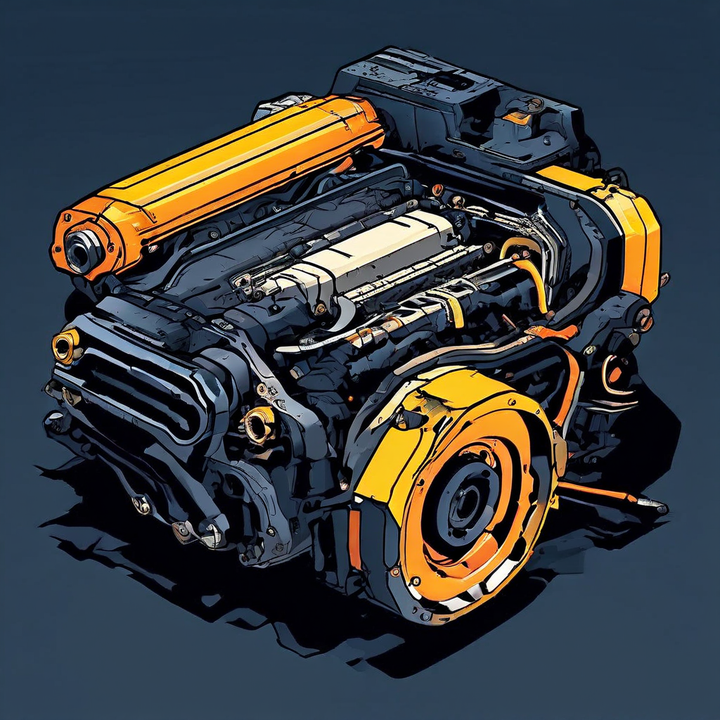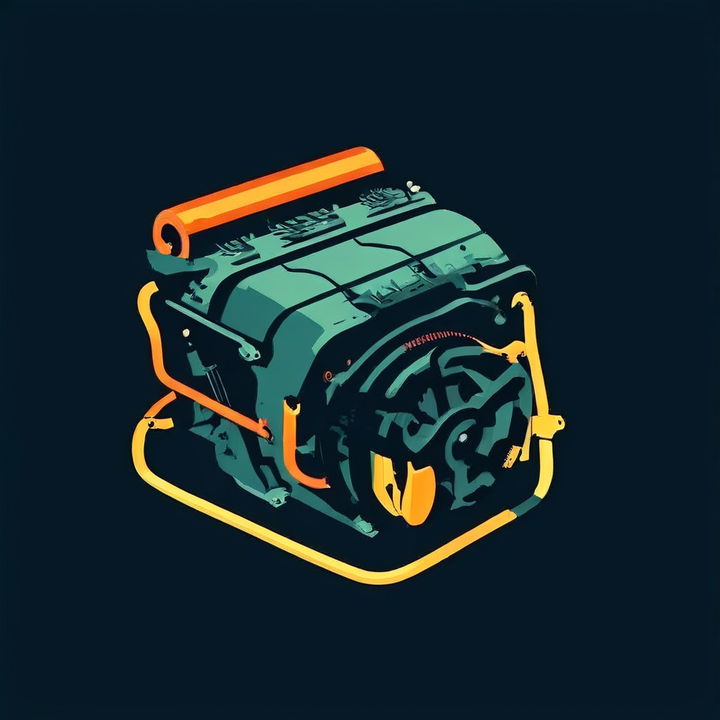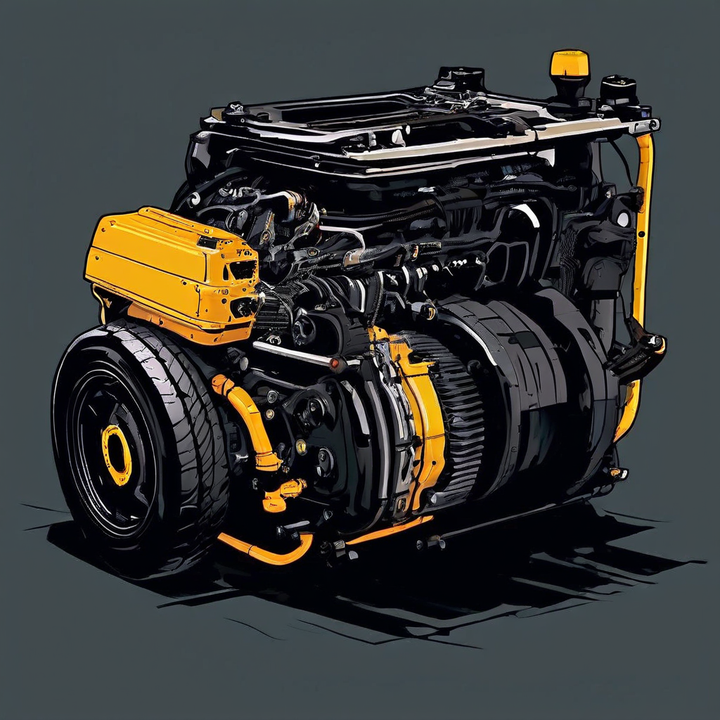


As an experienced automotive mechanic, I've encountered numerous situations where customers have faced various issues after undergoing an engine replacement. While a new engine can breathe new life into a vehicle, the process of swapping engines is intricate and requires meticulous attention to detail. If not executed properly, it can lead to a host of problems that can be frustrating and costly to resolve.
In this article, I'll share my insights and experiences, highlighting some of the most common problems that can arise after an engine replacement, and provide practical tips on how to diagnose, troubleshoot, and address these issues effectively.

One of the most prevalent issues I've encountered is oil leaks. Even a minor oversight during the installation process, such as a damaged gasket or improperly tightened seal, can result in oil seeping from various points. This can lead to low oil levels, which, if left unchecked, can cause catastrophic engine damage.
Common Sources of Oil Leaks:
| Source | Description |
|---|---|
| Oil Pan | Improperly seated gasket or damaged pan |
| Valve Covers | Damaged gaskets or loose bolts |
| Timing Cover | Improper installation or damaged seals |
I vividly remember a case where a customer brought in their vehicle complaining of an oil leak just a few weeks after an engine replacement. Upon inspection, we discovered that the oil pan gasket had not been properly seated, allowing oil to seep out. While it may seem like a minor issue, neglecting such leaks can have severe consequences, including potential engine failure.
Another common problem I've encountered is related to the cooling system. After an engine swap, issues with components like the water pump, thermostat, or coolant hoses can lead to overheating or improper coolant circulation. This can not only cause engine damage but also result in breakdowns and costly repairs.
Potential Cooling System Issues:
Faulty water pump
Stuck or malfunctioning thermostat
Damaged or leaking coolant hoses
I recall a situation where a customer's vehicle would overheat within minutes of starting the engine, even after a fresh engine replacement. Upon further investigation, we discovered that the water pump had been installed incorrectly, causing it to fail prematurely. Replacing the water pump and properly bleeding the cooling system resolved the issue, but it highlighted the importance of paying close attention to every detail during the installation process.

Vacuum leaks are another common issue that can arise after an engine replacement. These leaks can occur due to damaged or improperly connected vacuum hoses, and they can wreak havoc on the engine's performance. Symptoms of vacuum leaks include:
Rough idling
Poor fuel economy
Drivability issues
I recall a customer who brought in their vehicle complaining of a rough idle and poor acceleration after an engine swap. After conducting a thorough vacuum leak test, we discovered multiple leaks in the vacuum hose system. Once these leaks were addressed and the hoses were properly connected, the engine's performance improved significantly.
Improperly installed or damaged sensors, such as the camshaft, crankshaft, or mass air flow sensors, can lead to a variety of issues, including engine misfires, poor performance, and check engine lights. Additionally, loose or incorrect wiring connections can cause electrical problems.
Common Sensor and Electrical Issues:
| Issue | Symptoms |
|---|---|
| Sensor Malfunctions | Engine misfires, poor performance, check engine lights |
| Wiring Issues | Starting issues, battery drainage, warning lights |
I remember a case where a customer's vehicle would intermittently stall and refuse to start after an engine replacement. After extensive troubleshooting, we discovered that one of the crankshaft position sensors had been installed incorrectly, causing the engine control module to receive faulty signals. Replacing the sensor and ensuring proper installation resolved the issue.
Improper installation or damaged exhaust components, such as manifolds or gaskets, can result in exhaust leaks. These leaks not only create an annoying noise but can also potentially allow harmful gases to enter the cabin, posing a health risk to the occupants.
I once had a customer who complained of a loud exhaust noise and a faint smell of exhaust fumes inside the cabin after an engine swap. Upon inspection, we discovered that the exhaust manifold gasket had been improperly installed, causing a leak. Replacing the gasket and ensuring proper torque specifications resolved the issue, eliminating the noise and potential health hazard.
When faced with issues after an engine replacement, it's crucial to follow a systematic approach to diagnose and troubleshoot the problem effectively. Here are the steps I typically follow:
Visual Inspection: Thorough inspection of the engine bay for leaks, loose connections, or damaged components.
Check Engine Light: Read and diagnose any trouble codes using an OBD-II scanner.
Perform Leak Tests: Conduct vacuum, compression, or cooling system pressure tests as needed.
Check Sensor Readings: Verify sensor functionality and accuracy using a multimeter or scan tool.
Inspect Wiring: Inspect wiring harnesses and connections for damage, corrosion, or loose connections.
Once the root cause of the issue has been identified, it's time to address it through proper repair and maintenance procedures. This may involve:
Replacing Gaskets and Seals: Installing new gaskets and seals to prevent leaks.
Adjusting or Replacing Components: Adjusting or replacing components like water pumps, thermostats, hoses, sensors, or wiring harnesses.
Proper Torque Specifications: Ensuring all bolts and connections are tightened to the correct torque specifications.
Routine Maintenance: Performing routine tasks like oil changes, filter replacements, and fluid level checks.
Through my years of experience, I've learned that prevention is key when it comes to avoiding issues after an engine replacement. Here are some essential tips to keep in mind:
Follow Manufacturer Guidelines: Strictly adhere to the manufacturer's instructions and specifications during the engine replacement process.
Use High-Quality Parts: Use genuine or high-quality aftermarket parts to ensure proper fit and function.
Proper Break-In Procedure: Follow the recommended break-in procedure for the new engine.
Regular Maintenance: Maintain a regular maintenance schedule, including oil changes, fluid level checks, and inspections.
While addressing issues after an engine replacement can be frustrating, it's important to consider the potential costs involved. The cost of repairs can vary depending on the specific problem and the extent of the work required.
Potential Cost Factors:
Labor costs
Diagnostic fees
Replacement parts
It's essential to factor in these potential costs when budgeting for an engine replacement project. Having a contingency fund set aside can help alleviate the financial burden should any unexpected issues arise.
In conclusion, while an engine replacement can breathe new life into a vehicle, it's a complex process that requires meticulous attention to detail. By being aware of the common problems that can arise, such as oil leaks, cooling system issues, vacuum leaks, sensor malfunctions, electrical gremlins, and exhaust leaks, you can be better prepared to address them promptly and effectively.
Remember, prevention is key. Following manufacturer guidelines, using high-quality parts, adhering to proper break-in procedures, and maintaining a regular maintenance schedule can go a long way in avoiding these issues altogether.
If you do encounter problems after an engine replacement, don't hesitate to seek the assistance of a qualified mechanic. With the right expertise, diagnostic tools, and a systematic approach, most issues can be resolved, restoring your vehicle to optimal performance and ensuring a smooth driving experience.
Common sources of oil leaks include the oil pan, valve covers, and timing cover. Improperly seated gaskets or damaged components can cause oil to seep out.
Potential cooling system issues include a faulty water pump, stuck thermostat, or damaged coolant hoses. These can lead to overheating or improper coolant circulation.
Vacuum leaks from damaged or loose vacuum hoses can result in rough idling, poor fuel economy, and drivability issues.
Improperly installed or damaged sensors like camshaft, crankshaft, or mass air flow sensors can cause engine misfires, poor performance, and check engine lights. Loose wiring connections can also create electrical problems.
Improper installation or damaged exhaust components like manifolds or gaskets can result in exhaust leaks, creating noise and potentially allowing harmful gases into the cabin.
Perform a visual inspection, check engine codes, conduct leak tests, verify sensor readings, and inspect wiring harnesses and connections to diagnose problems systematically.
Recommended maintenance includes replacing gaskets and seals, adjusting or replacing components like water pumps and sensors, ensuring proper torque specifications, and performing routine tasks like oil changes.
Follow manufacturer guidelines, use high-quality parts, adhere to the recommended break-in procedure, and maintain a regular maintenance schedule to prevent future issues.
Potential cost factors include labor costs, diagnostic fees, and replacement parts. Having a contingency fund can help alleviate financial burden.
Consider the condition of the rest of the vehicle, how long you intend to keep the car, the amount owed on the vehicle, and its resale value to determine if an engine replacement is worthwhile.

Sarah isn't your average gearhead. With a double major in Mechanical Engineering and Automotive Technology, she dived straight into the world of car repair. After 15 years of turning wrenches at dealerships and independent shops, Sarah joined MICDOT to share her expertise and passion for making cars run like new. Her in-depth knowledge and knack for explaining complex issues in simple terms make her a valuable asset to our team.











